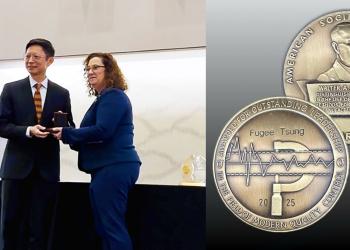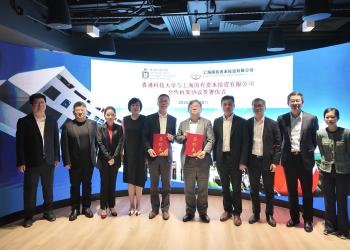HKUST Scientists Reveal How Human Brains Keep Balance
An interdisciplinary team of scientists from The Hong Kong University of Science and Technology (HKUST) has discovered the mechanism of how human brains turn on and off neuronal activities, providing an important foundation to understand a wide range of neurologic conditions such as epilepsy, Parkinson's disease and ataxia-telangiectasia diseases.
“As with all things in life, healthy brain function depends on a balance of neuronal activities. We think of our brains as active - moving a leg and saying a word are all "active" events, but it is just as important that our brains be able to stop these actions,” said Cheng Aifang, a postgraduate student from the Division of Life Science who made the discovery under the guidance of the division’s head and Chair Professor Karl Herrup. “Yet it was not clear how our brains actually perform this go/stop function until now.”
The team discovered that the brain balances excitation and inhibition through regulating ATM and ATR – large kinase enzymes, levels. In pathological conditions, when ATM levels drop for example, ATR levels increase, vice versa. In addition, the team also discovered that ATM only regulates excitatory synaptic vesicles while ATR is responsible for only the inhibitory ones. This is achieved by controlling the movement of these tiny synaptic vesicles in the neuronal synapse – the gap between two neurons that regulates information flow in the brain.
“The discoveries are in the realm of basic research, but they have important implications for human disease” said Prof Karl Herrup, also director of the Super-Resolution Imaging Center (SRIC). “Epilepsy, for example, is a condition where one of the problems is that inhibition fails. As our findings would predict, humans with too little ATR have a problem with epilepsy, while people with ATM deficiency by contrast are ataxic - a reduced ability to make finely controlled movements and keep the proper E/I ratio. This means that there is a yin-yang relationship between ATM and ATR. And this is only the beginning. We believe that our work has potential relevance to a much broader range of neurologic conditions.”
The findings were published in the Journal Proceedings of the National Academy of Sciences earlier this month.
Utilizing super-resolution microscopy offered by at HKUST, the researchers were able to view the cellular location of the two kinases at ultra-high magnification. The custom designed super-resolution microscope with active stage locking provided the stability needed to obtain high-resolution images.
“One of the challenges we faced was that even at high magnification, all vesicles look pretty much alike,” said Prof Du Shengwang, physics professor and Associate Director of SRIC. “To provide differentiation, we developed a three-color version of our super-resolution system, which allowed the team to prove that ATM and ATR were never found on the same VAMP2-containing synaptic vesicle.”
About The Hong Kong University of Science and Technology
The Hong Kong University of Science and Technology (HKUST) (www.ust.hk) is a world-class research university that focuses on science, technology and business as well as humanities and social science. HKUST offers an international campus, and a holistic and interdisciplinary pedagogy to nurture well-rounded graduates with global vision, a strong entrepreneurial spirit and innovative thinking. HKUST attained the highest proportion of internationally excellent research work in the Research Assessment Exercise 2014 of Hong Kong’s University Grants Committee, and is the world’s second in the latest QS’ Top 50 under 50 ranking. Its graduates were ranked 12th worldwide and top in Greater China in Global Employability University Survey 2017.
For media enquiries, please contact:
Anita Lam
Tel : 2358 6313
Email : anitalam@ust.hk
Etta Lai
Tel : 2358 6317
Email : ettalai@ust.hk










